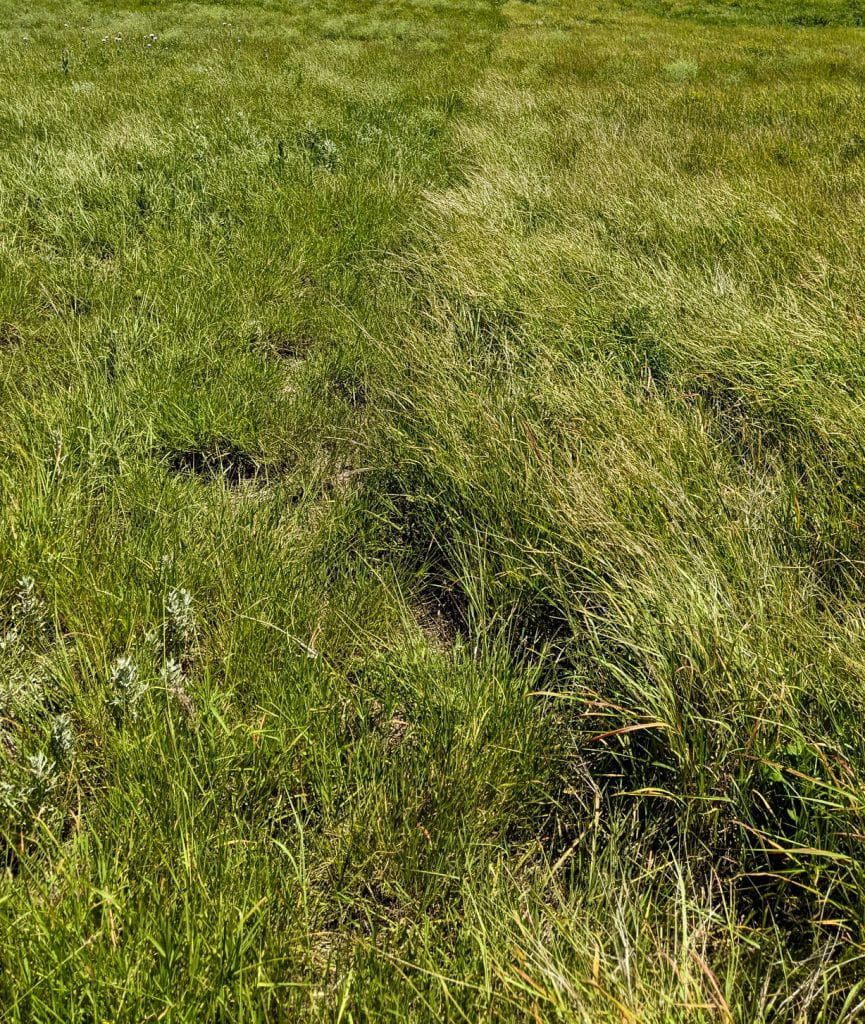by Helen Giefer, ASI graduate student with KC Olson, ruminant nutritionist
While Caucasian and yellow bluestem – collectively referred to as old-world bluestems – continue to spread across the state of Kansas, promising new research may provide landowners with new hope for controlling the invasive species. Upon the discovery that late-summer prescribed fire (August 1 to September 21) successfully set back yellow bluestem, a similar study is now underway for Cacausian bluestem.
The study is taking place near Kanopolis, KS. Three treatments were applied: plots burned once (2019), plots burned twice (2019 and 2021), and plots that were never burned (control). Baseline data were measured in 2019 preceding the first burn with follow-up data collected in each of the following summers. The study will conclude with summer 2023 data collection.

Not only was there a decrease in Caucasian bluestem frequency (Figure 1), represented by the number of species occurrences in 100 one square foot quadrats, but biomass associated with the voluminous plant was also drastically decreased. However, three years following the first fire, frequency of the invasive no longer differed between unburned plots and plots burned once while plots burned twice had substantially lower frequency, suggesting repeated growing season fires may be necessary for Caucasian bluestem removal in heavily infested areas. Litter consumption by fire increased the amount of bare soil, allowing new plants to establish and increasing the grass species richness.

Burning is a necessary pasture maintenance tool in much of Kansas. Traditionally, spring burning has been the primary practice as it selects for the warm-season grasses that most benefit summer grazing. However, the benefits of burning in other seasons should not be overlooked.
Furthermore, summer fires rely on plant litter instead of the previous year’s plant growth to carry the flame and are less intense and more predictable than spring fires. Beyond these convenience and safety factors, recent research has shown that plant species diversity, directly associated with prairie health, increases with summer and fall fires.
The benefits of summer burning on inhibiting establishment and spread of invasive plants are becoming more evident, as plants such as sericea lespedeza have been shown to be negatively affected by the timing of these fires.
The advantages of burning old-world bluestems in late summer may arise from the timing of fire as well as their sensitivity to heat. Old-world bluestems mature much more quickly than native species. It was found that yellow bluestem seeds and plants were more sensitive to heat intensity than native plants which likely also played a factor in the drastic decreases evident in yellow bluestem abundance following late-summer fire in which higher ambient temperatures contribute to hotter fires. The same has not yet been determined for Caucasian bluestem, but the current research may point to similar attributes between it and the closely related yellow bluestem.
Though prescribed fire is not part of the culture in western Kansas nearly to the extent that it is farther east, fire inclusion may become critical in more areas as invasive species, including old-world bluestems, continue to spread. While rangelands in eastern Kansas require fire every two to three years, those in far western Kansas may only need fire application once every decade. Beyond invasive plant control, the same overall benefits associated with burning in other areas apply in terms of woody plant control and previous years’ plant growth removal that improves grazing, promotes new plant growth, and removes fuel loads capable of carrying wildfires.
Prescribed fire in western Kansas may be especially crucial in years following higher than usual amounts of moisture, such as that observed in far northwest Kansas in May and June of this year. Greater grass growth not only blocks out sunlight from reaching new growth the following year but also results in greater-than-usual fuel loads contributing to extreme wildfire conditions in the dormant season.
For more information on characteristics of old-world bluestems, check out https://www.fs.usda.gov/detail/r3/forest-grasslandhealth/invasivespecies/?cid=fseprd609070.